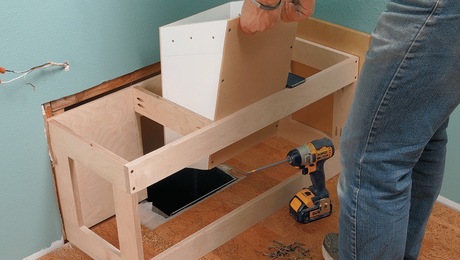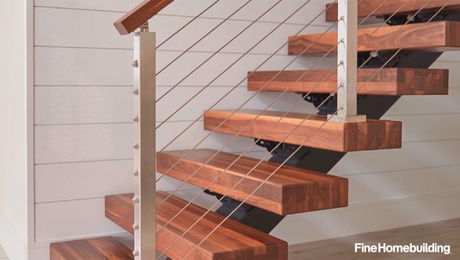I replaced a couple hanging light fixtures with custom wired non-UL listed hanging metal light fixtures (fixtures were from a foreign country and didn’t have a socket or wiring) under a neighbor’s covered porch. There is no ground wire to the fixture box and they’re near a swimming pool and within a person’s reach. I convinced him to let me protect the lights with a GFCI. The subpanel is too small and outdated to accept a GFCI breaker. I attempted to intercept the power supply to the light switch with a GFCI receptacle and use the load terminals to protect the circuit but there was no easy place to intercept the supply to the switch. I ended up installing a feed-through GFCI between the switch and the lights (so the GFCI is switched by the light switch). Now the GFCI frequently trips when the lights are turned on and the reset button has to be pressed to get the lights on. Is it ok to switch a GFCI or not (it is a 3-way switch set-up, but that shouldn’t be an issue-I just placed the GFCI between the last switch and the lights).
Discussion Forum
Discussion Forum
Up Next
Video Shorts
Featured Story

Learn how to plan, fabricate, and install a chute to conveniently send your dirty clothes from an upstairs bathroom or hallway to your laundry room below.
Featured Video
Builder’s Advocate: An Interview With ViewrailHighlights
"I have learned so much thanks to the searchable articles on the FHB website. I can confidently say that I expect to be a life-long subscriber." - M.K.

















Replies
The GFCI needs to be on the incoming power supply as the power supply switches wires depending on what switch------IIRC
As far as "can gfci be switched" sure if it's not a trip on power failure type.
Those shop keyed safety power switches are upstream of gfci outlets.
So, the electrical supply shop should sell feed-through GFCIs that won't "trip on power failure" (I'm trying to describe a GFCI that is not actually a receptacle-I think that's what it's called). If these are "trip on power failure" will they always trip? When I installed everything it worked fine.
I don't understand you're last line. What's a "shop keyed safety power switch"?
My wording wasn't the best there.
Power disconnect for your shop outlets & tools that is operated by a key.
Non rescepticle gfci's are popular for jetted bath tubs, while most motors & plugs are behind the access doors,a lot of times there will be a "blank" style cover that is the gfci for the tubs recepticle.
"Why do you hurt me when I do bad things to you?" My youngest son to his older brother
switch the out feed side...
Life is not a journey to the grave with the intention of arriving safely in a pretty and well preserved body, but rather to skid in broadside, thoroughly used up, totally worn out, and loudly proclaiming
WOW!!! What a Ride!
Forget the primal scream, just ROAR!!!
In theory it shouldn't matter. In practice there can be switching transients that "confuse" the GFCI. Switching brands may help.
PS: Double check that it's the hot that's being switched (remember that wiring for a switch leg can be bass-ackwards) and that the switched hot line is feeding the brass screw on the GFCI.
PS: If the wiring is old K&T then there's a chance that the 3-way is wired in a push-pull configuration. In such a case the GFCI wouldn't be expected to work on the switched side, and would likely tend to trip more on, say, down/up than up/down.
The GFCI is wired correctly. The black wire coming off the common screw of the 3-way switch that feeds the lights is now going to the GFCI terminal labeled "line" and "hot". The neutral is connected to the "nuetral" and "line" terminal. Now that I think about it, I put the GFCI in a double gang box next to the switch. This box is also acting as a J-box and goes on to feed other other receptacles (not switched). There is a seperate power feed pulled into the box to feed these other items, but I think I might have tapped off this neutral and tied that to the GFCI. The house was built in the early 60s and the wiring is an older style Romex.
A deadface GFCI is what they are talking about. They are available at the HOME horror stores.But that should not make any difference. It is a just GFCI receptacle without the receptacle terminals.But as mentioned a different brand like behave differently.If that box has the power feed to those switches/lights then you should be able to wire the GFCI before the switches.This shows all possible combinations of ways that 3-ways can be wired.http://www.selfhelpandmore.com/switchoutlet/3way/If needed what is the possibility of eliminating one of the 3 ways so that it is only controlled by one location and downstream of the GFCI? I know that it can be done electrically. What I am asking is if both switches are really needed?.
.
A-holes. Hey every group has to have one. And I have been elected to be the one. I should make that my tagline.
The box has a power feed but it is not the power feed to the 3-way switches and lights. The order of the set-up is: 1) power fed 3-way switch; 2) second 3-way switch; 3) dead-face GFCI; 4) lights. Items 2 and 3 are in the same box, item 1 is in another room. This guy is really picky, so he won't want to eliminate a switch location as they're both adjacent to doors that open to the porch. At first I actually installed a 3-way dimmer at location 1, but quickly realized that you can't dim a GFCI.
I might be able to replace the single gang box at location 1 with a double, moving the GFCI to this location. However, I think the box might be wedged between two studs. I could possibly drop a single gang GFCI receptacle below the switch (which would probably look better anyways). This guy would be really upset if I had to patch any drywall or paint.
There is a GFCI/SWitch.I have never looked at the details. I suspect that it is a single pole switch and not 3 way. And I suspect that it is wired independently and not before or after the GFCI. But I don't know.I hve seen that at Lowes so you can check the package..
.
A-holes. Hey every group has to have one. And I have been elected to be the one. I should make that my tagline.
Thanks, I'll check that out. I'm heading over to THD right now, I don't have a Lowe's near me. Unfortunately the electrical supply house isn't open on weekends.
Doesn't much matter where you get the "line" side neutral from (aside from code issues), but of course the "load" side neutral must feed the device which is being protected, with no sharing of that neutral with other circuits.It might be wise to use a neon tester to make sure that you have hot and neutral correct. Folks weren't always careful about polarity back then.
If your view never changes you're following the wrong leader
You're right, the GFCI is just measuring the current difference between the hot and neutral on the line side-that eliminates one variable. I checked the polarity and it is correct. I went to THD and they had a GFCI protected switch, but it was a combination switch/receptacle and looked awkward and wasn't a 3-way.
I'm going to try again to place the GFCI before the first 3-way switch. Hopefully this will work and I might even be able to install a dimmer.